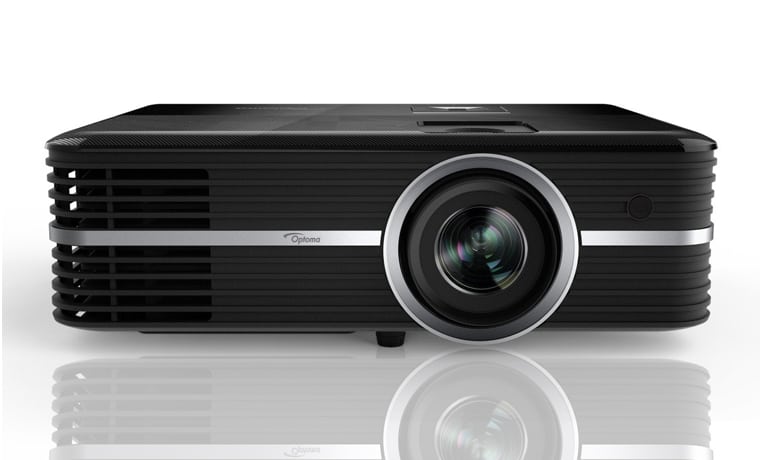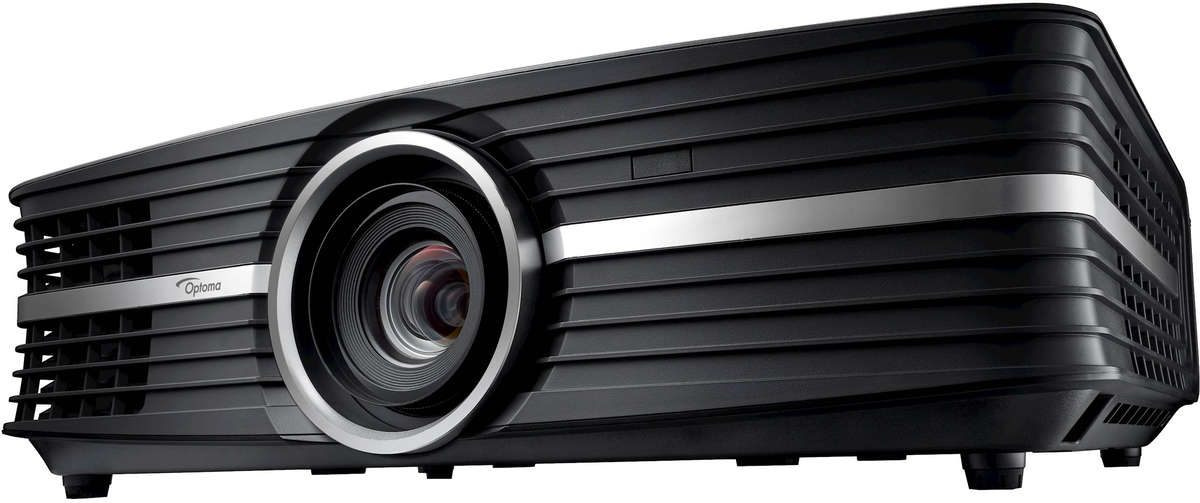
The UHD55 offers a wealth of connections on the unit with two HDMI 2.0a ports, VGA, and one 3.5mm audio in jack. When input latency was measured using a Murideo Seven G-8K generator/meter we found the published latency specs to be accurate: 1080p/60 17ms, 1080p/120 7ms, 1080p/240 4ms, and 4K/60 16ms.
Optoma projector uhd50x 1080p#
These numbers pair very well with the next-generation consoles such as the Xbox Series X and PlayStation 5 because many of the games that support the 120hz frame rate have the resolution dropped to 1080p anyways. This is about the lowest input lag you can find on a gaming projector today and is associated with the most recent DLP chipset. The specified input lag ranges from 17ms for 1080p/60hz and 4K/60hz 1080p/120hz is rated at an impressive 8.6ms, while 1080p/240hz is an even lower 4.4ms.

The input lag varies depending on resolution and source timing, with frame rates of 60hz, 120hz, or 240hz resulting in lower latency as frame rate increases. Optoma has set their sights on targeting the gamer who wants to game on the big screen and this is evident in extremely low input latency. When you do need one, replacement lamps cost $235. Even when considering that the UHD55 uses a tried-and-true lamp-based light source, the supplied lamp should last many users years before needing replacement unless you are a very heavy user and always run in the brightest mode at all times. Eco allows for 10,000 hours and Dynamic will allow for an impressive 15,000 hours. Based on Optoma's specification, the default Bright mode allows for 4,000 hours of use. The specified lamp life hours will vary depending on amount of use and Brightness Mode used. This is accomplished with use of a filter that engages based on using the WCG picture modes. The UHD55 is rated for 3,600 ANSI lumens and support for wide color gamut of the DCI-P3 color space with the specification of 97% coverage. Our usual advice applies though: if you know you're sensitive to rainbows, work with a retailer who accepts returns. Optoma also employs an 8-segment RGBWRGBW color wheel, and luckily during my time with the UHD55 I did not experience any rainbows, which is always a potential concern with DLP projectors. Let's take a closer look.Īs mentioned, the Optoma UHD55 uses Texas Instruments DMD 0.47 DLP chipset in combination with XPR (Xpanded Pixel Resolution) to perform a four-phase pixel shift in order to resolve 4K resolution images. Having an affordable package that boasts great gaming performance with latency ranging from 4.4ms to 16.9ms, and which potentially does well with cinema thanks to its specification of 97% DCI-P3 color space coverage, means this may be a projector for the budget-conscious to be on the lookout for. While they may have the gaming performance down, they can leave much to be desired when it comes to using them for cinema, or perhaps lack key features. In some cases, gaming projectors can be hit or miss. It uses a lamp based light source and the Texas Instruments 0.47-inch chipset to produce 4K resolution using four phase pixel shift, while also tapping Optoma's 8 segment RGBWRGBW color wheel. The UHD55 is a 4K XPR (Xpanded Pixel Resolution) DLP with 3,600 ANSI lumens brightness. It provides an all-in-one solution at an attractive and very reasonable $1,799 street price at time of writing, so it has quite a bit to offer.

The Optoma UHD55 is a new entry for 2022 and is targeted towards gaming and home entertainment.
Optoma projector uhd50x movie#
This will allow me to take my time dismantling the old projector to identify the failing chip and replace it at my leisure and then sell it once I'm done.The Optoma UHD55 is a solid gaming and movie projector with an attractive price point that performs well above the asking price and is suitable for bright and dark room viewing.

I think at this point my best bet is to replace the projector with something newer. I haven't seen a lot of instances where the chip manufacturer is willing to talk to their indirect customers.
Optoma projector uhd50x plus#
If I accept the repair estimate, the shipping is the same, labor is a flat $100, plus the (right now) unknown cost of the replacement chip.Īssuming the chip manufacturer has a better warranty on the chip than Optoma has on the projector, that's a warranty they extend to their customer who is technically Optoma and not me. If I decline the repair cost, it'll still run me $85 in diagnostic fees and $25 in shipping so I'd be out $110 minimum even if I don't get it fixed. I'd have to ship it to them and let them look at it and give me an estimate. I went ahead and checked with Optoma but they are only willing to do an out of warranty repair.


 0 kommentar(er)
0 kommentar(er)
